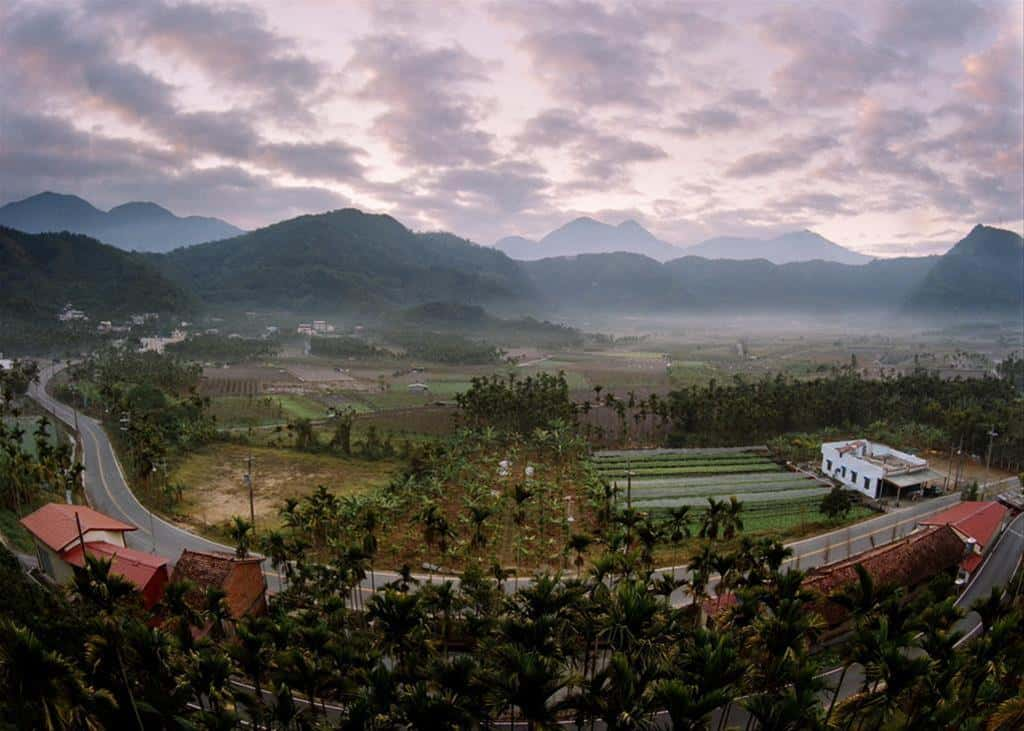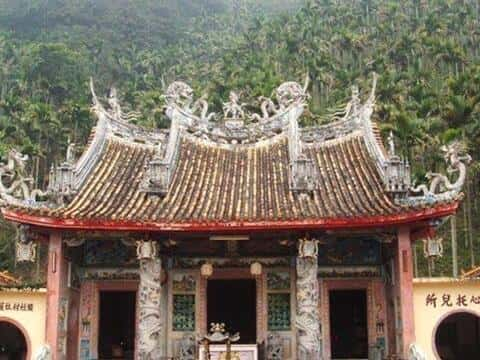Peat Soil Basin
Introduction
This basin is located at an elevation of 600 meters, and enjoys a mild and cool climate. A few decades ago, there were bright green rice paddies, and every year during the autumn harvest, the landscape turned into a beautiful shiny gold color. The peat soil-quality was very fertile, producing an abundance of rice. There were six wooden rice mills, and one has been preserved for display next to the stage in the plaza of the Three Sages (Sanshen) Temple. In recent years, rice has been replaced by vegetables as the main product of Yuchih Township.
For thousands of years, due to the effects of alternating water-plant growth and silting, the basin has accumulated a large, vast area of peat bog, which is about 50 hectares in width, and 10 meters deep. Due to the swamp environment, organic matter does not decompose easily, and this has resulted in the forming and accumulation of the peat. Peat is the most extensively used and most important organic cultivating material in the world. Much research shows that during the 18th century, it was already being used for the production of vegetables and other plants. Its advantages can be summed up as follows:
It is better able to resist the decomposition of micro-organisms. It is a leader of organic solid states. It acts as a refiner for solid state soil.
The capacity to exchange positive ions is the best norm for preserving the soil fertility. Peat has a high cation exchange capacity of around 121 – 244 meq/100g (ph7), which can provide slow release for nitrogen and phosphorus organic fertilizers.
The loose quality can improve the soil's ventilation and permeation, and it possesses a good water retention capacity.
It contains rich natural nutrients needed by all kinds of plants, including varying amounts of elements including iron, manganese, copper, zinc, etc. as well as organic matters (humic acid, sulfonic acid, humogelite, amino acids, carbohydrates, etc.). Because peat contains a high amount of humic acid, humic acid fertilizers that are sold on the market have largely been extracted from peat. They decompose at a slower rate, and are one of the top natural organic fertilizers.
The peat soil is of a soft, loose quality. In the past, when growing paddy rice, it was necessary in many places to lay down bamboo sticks, in order to avoid sinking into the mud. After the 921 Earthquake, the basin area experienced much rain and was easily flooded. Consequently, most of this land had to lie fallow. Because the surface area of the peat soil lacked irrigation, it formed a hard crust. Standing from above, one could easily experience a feeling of the earth's surface shaking. On the other hand, a place that had a continuous provision of water would not form a hard crust, because the peat would float on the surface of the water, and slowly grow water plants which would turn into a unique landform on the surface of the waterbed. When walking on the basin, one experiences a rocking feeling. This is the widely renowned “field of waves” (located directly in front of Toushe's Redwood Cottage). On the night of the 921 Earthquake, an industrial road located at the center of the basin was shaken down 10 meters to the bottom of the lake, revealing a special geological characteristic of the “living basin”.
The Toushe Basin has a special quality of peat soil, and the crystal-clear spring water is provided year-round. In the deeper areas of water are large river clams. The beautifully colored rosy bitterling and Taiwan bitterling have symbiotic relationships with the river clams. The more shallow bodies of water have traces of another kind of clam. Other fish species are also plentiful, and include the Formosan zacco, the crucian carp, the small snakehead, the topmouth gudgeon, the medake fish, and the capoeta semifasciolata, etc. The wetlands also have many precious willow trees, and egrets fly from the twigs of the trees, filling the countryside landscape. The natural ecological resources here are especially rich, and include numerous fireflies, dragonflies, damselflies, frog varieties, beetles, stick insects, praying mantises, bird varieties, fish varieties, and shellfish varieties.
For the Toushe District peat bog guided tours and basin bicycle journeys, please contact the Toushe Redwood Cottage at 886-49-2861831.
Toushe Redwood Cottage:No. 76, Heping Lane, Toushe Village, Yuchih, Nantou County, Taiwan
Telephone:886-49-2861831
Service provided:Bar-B-Q, accommodation, bicycle rental, tourist guide. Please contact Mr. Wu.
Information
Opening Hours: 09:00-18:00
TEL: +886-49-2861831
Address: Toushe Village, Yuchi Township, Nantou County Taiwán, R.O.C
Facilities
- Trails
How to Get There
Choose a transportation method based on your departure location.Transport
2. Puli 》 Sun Moon Lake 》 Toushe 》 Toushe Police Station (Provincial Road No. 21 69K) 》 turn left to Provincial Road No. 21 Jia 》 1KM 》 Erping Store 》 100 meters 》 right side about 30 meters at Nantou Bus Toushe station
Updated:2020-09-04




